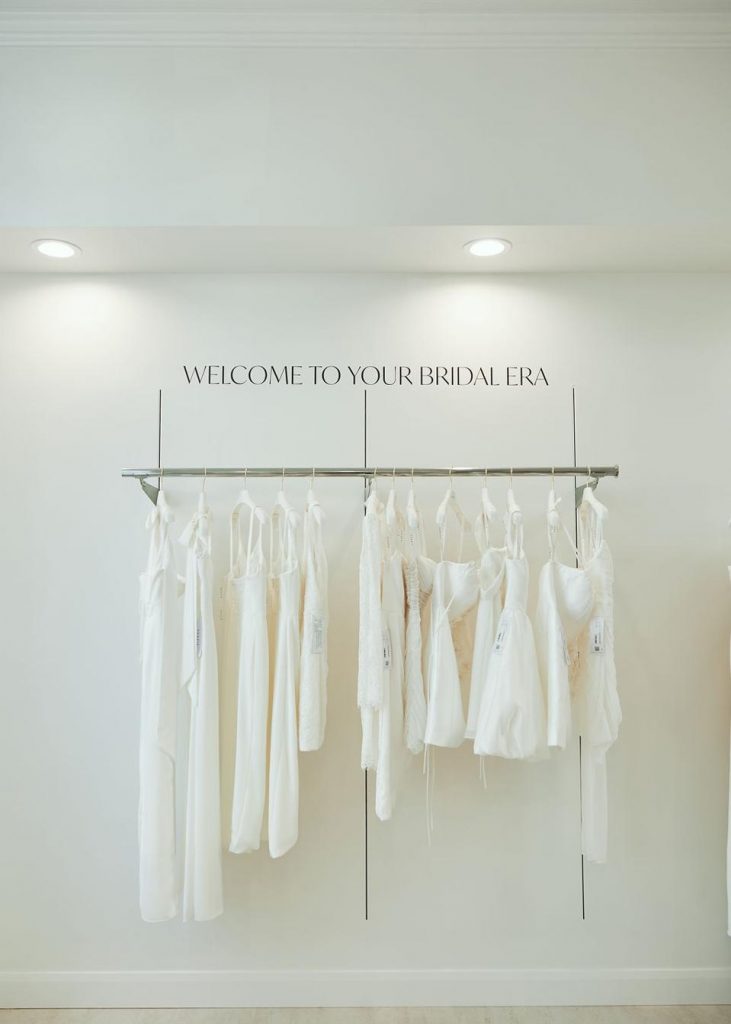Love may be priceless, but weddings certainly aren’t. With the average American wedding now projected to cost $36,000 in 2025 according to Zola, couples and their bridal parties are feeling the financial squeeze more than ever. For bridesmaids especially, the burden has become overwhelming: a single local wedding can set them back anywhere from $1,500 to $2,500, while formal or black-tie affairs typically run between $2,000 and $3,500 when factoring in the dress, shoes, alterations, hair and makeup, travel, accommodations, gifts, and pre-wedding events.
The response? A movement that transforms the bridal industry from the ground up, one that prioritizes sustainability, accessibility, and customization over tradition and excess. Modern brides and their parties are abandoning the outdated model of disposable fashion and astronomical markups, embracing instead a future where every dress fits perfectly, costs less, and can be worn again.
The Hidden Cost Of Traditional Bridal Fashion
The average bridesmaid is just one cost. Add alterations, shoes, accessories, and beauty services, and that honor of standing beside your best friend comes with a four-figure price tag.
Destination weddings have multiple costs while bachelorette parties, in the wake of Instagrammable weekends away, have morphed into multi-day affairs adding another exorbitant costs. For many, joining a bridal party now requires serious financial planning and difficult conversations about affordability. The problem extends beyond bridesmaids. A recent survey by Lendingtree found that 67% of newlyweds in 2025 took on debt to pay for their weddings, and 16% have considered divorce due to financial stress. The industry’s traditional pricing structures, built on scarcity and one-time wear, have created an unsustainable model.
Made-to-Order Emphasizes Sustainable Bridal Fashion
A new generation of bridal brands is rewriting the rules. By embracing direct-to-consumer models, made-to-order production, and technology-driven customization, companies like Azazie prove that quality, fit, and sustainability don’t require luxury price tags.
“As a brand, we believe every bride and bridesmaid deserves to feel confident, beautiful, and seen. We’re building an AI recommendation engine that watches the latest trends and gets to know your style, body, and wedding vision so we can recommend dress styles that suit you and are on-trend,” says Charles Zhong, CEO of Azazie, an online destination for bridal and bridesmaid gowns.
The brand’s approach is straightforward: every dress is crafted to the wearer’s exact measurements, eliminating costly tailoring while reducing waste. Azazie offers over 500 styles in more than 80 colors across sizes 0–30. The made-to-order model means no excess inventory, no markups for middlemen, and no compromise on quality or size.
The technology is equally impressive. Azazie’s AI engine uses a conversational interface that feels like texting with a stylist, asking questions about venue style, aesthetic preferences, and body proportions. Behind the scenes, it analyzes trends from Pinterest, TikTok, Instagram, and runway collections, constantly refining recommendations. The result? A personalized shopping experience that delivers both style and substance.
“This year, we introduced men’s suits for grooms and groomsmen in a range of shades designed to mix and match seamlessly with the bridal party palette to offer a cohesive yet customizable wedding aesthetic,” Zhong added.
The New Era of Rewearable Bridal Style
The most compelling shift in modern bridal fashion is the emphasis on versatility. Today’s designs celebrate the idea that beautiful clothing should have multiple lives.
“Azazie was created to be a true one-stop shop for brides and their bridal parties. From veils and jewelry to shoes, gloves, and even men’s accessories designed to coordinate with bridesmaid palettes, our goal is to make the entire wedding experience seamless and inspiring,” Zhong explains.
The brand also offers a virtual dress lineup experience where customers can visualize different dresses in their exact venue, with their décor, lighting, and backdrop. Combined with expert stylists who refine recommendations and perfect the fit, the experience merges technology with personalized service.
Accessories play a bigger role in personal expression and rewearability. Brides are choosing capes, shawls, and detachable skirts that transition from ceremony to celebration. Statement details like metallic bows, puffed sleeves, and gloves are making a comeback, while comfort-driven footwear reflects modern brides’ desire for individuality.
Samantha Cordes, who wore an Azazie dress to her friend’s wedding, embodies this philosophy. “I rewore my dress to a ball and got so many compliments. The butter yellow is truly magical!! I can’t wait to rewear it again next spring,” she says.
This emphasis on rewearing challenges the ‘wear once’ culture, with sustainable practices and made-to-order production minimizing waste. The broader bridal industry is evolving. As seen during New York Bridal Fashion Week Fall 2026, trends like intricate lace, front bows, shimmering embellishments, and dramatic ballgowns dominated the runway. Yet beneath the spectacle, bridal fashion remains timeless.
“White will always transcend the ebbs and flow of bridal trends. Beyond tradition, it highlights the details and construction that elevate a bridal design. Corsetry, draped bias silk and its natural shine, are highlighted in white, all of which feel very current right now and our focus is the relaxed, contemporary bride who is effortless and understated,” says El Davison, Head of Brand and Marketing at Natalie Rolt, an Australian brand that also embraces made-to-order customization.
The flexibility of this approach allows a responsiveness that traditional bridal timelines don’t, zeroing in on the customization modern brides crave. It’s a future where wedding fashion honors both individual expression and collective responsibility so that looking beautiful and doing good are seamlessly intertwined.

